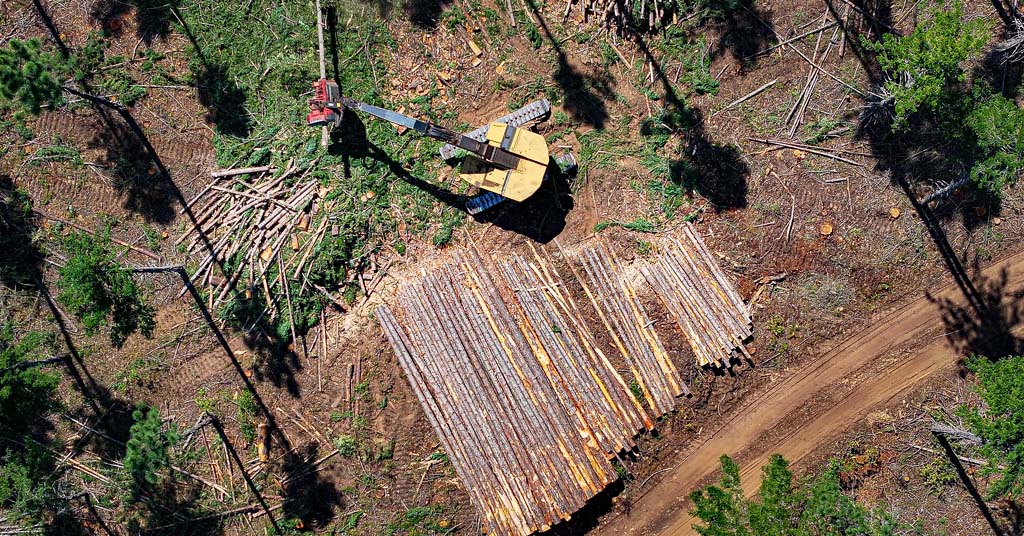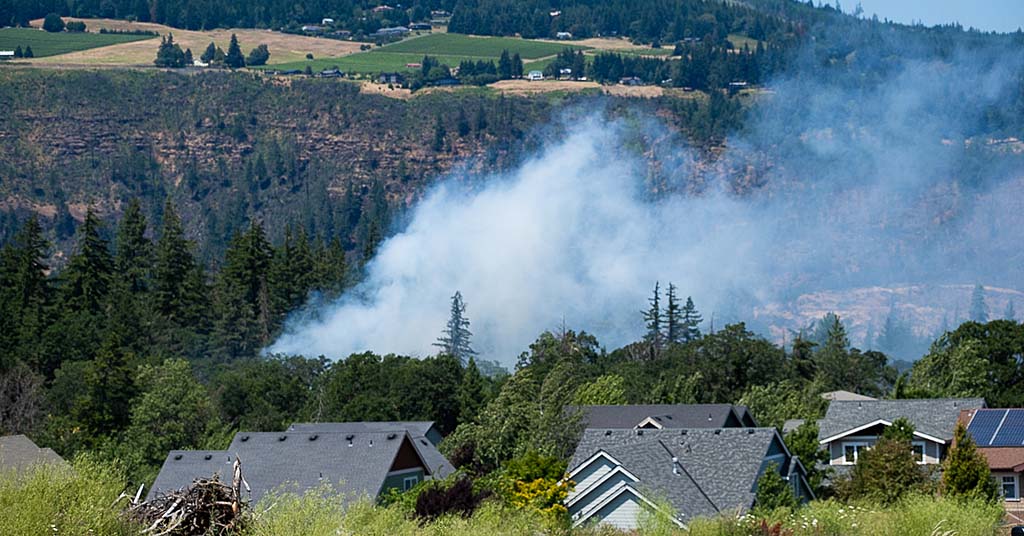A University of Idaho professor finds harmful microbes in smoke not only survive but travel hundreds of miles in host clouds
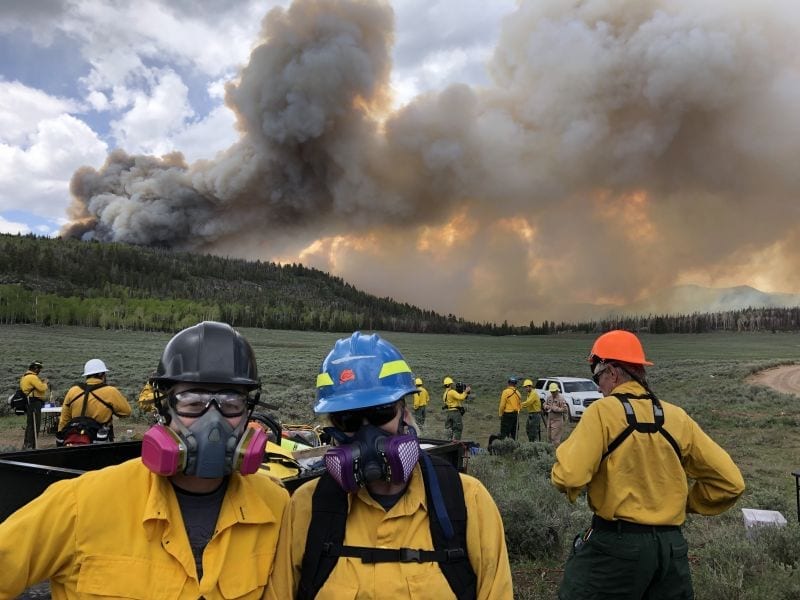
Headed our way? Researchers are learning more about what wildfire smoke carries on its cross-country journey. Courtesy of Leda Kobziar/University of Idaho
By Jordan Rane. February 11, 2021. Mere months since the smoke has cleared from the worst wildfire season on record in the western United States new light is being shed on what’s being stirred up in those epic, dead-gray plumes.
According to a new study, smoke is far more alive than it looks.
“What we’re seeing is just a tremendous number of organisms in the smoke that would not be present in ambient conditions—and the diversity of these microbes is also quite incredible,” says Leda Kobziar, a University of Idaho associate professor of wildland fire science, and co-author of a paper recently published in Science that’s given rise to new concerns about harmful airborne pathogens embedded in wildfire smoke.
“There are still big gaps that need to be filled regarding the connection between what we’re finding in smoke and the possible pathogenic health repercussions,” says Kobziar, a former state prescribed burn manager (fire lighter). “We’ve done a good amount of sampling that has included capturing some organisms that might have pathogenic characteristics, but they still need to be tested.
“The bottom line is that it’s very likely that there are organisms being transported in smoke that have potentially harmful effects on people. Which ones they are and how concentrated they are remain questions we haven’t yet answered.”
Startling discovery
Wildfire smoke is a complex mix of gas and tiny particulates fueled by plant matter and increasingly from an ever-widening assortment of man-made combustibles that on the wrong hot, dry, windy day can transform fresh air into a borderless, chemically laden sky of aerosolized trees, shrubs and roof insulation.
Beyond its obvious toxicity and swift ability to turn clear skies and vast skyscapes into apocalyptic scenes, smoke remains one of nature’s most challenging substances to get a solid handle on.
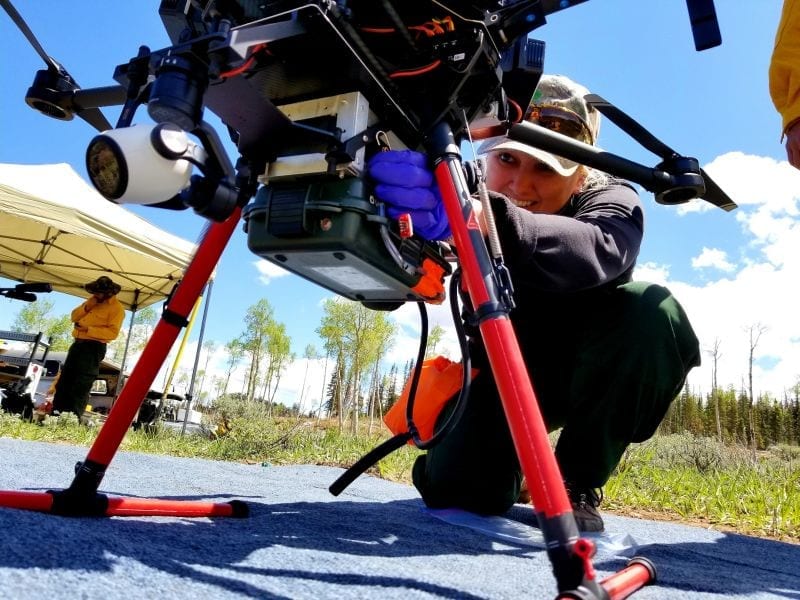
Carry on: University of Idaho professor Leda Kobziar prepares a drone used in researching wildfire smoke. Courtesy of Leda Kobziar/University of Idaho
Among others, NASA and the National Oceanic and Atmospheric Administration have collaborated on in-depth smoke studies, but plumes of unanswered questions remain. Many of them revolve around smoke’s increasingly complex composition, its unpredictability and the longer-term effects giant billows may have on public health and the environment.
Factoring in trillions of living organisms into the average smoke cloud adds yet another level of concern in understanding what exactly downwind communities are dealing with—and breathing.
“That’s the other part of this study that was really fascinating and frankly startling—the fact that a lot of these microbes found in smoke were still alive,” says Kobziar. “In the context of a wildland fire it’s quite amazing that these organisms are able to endure such conditions and high temperatures and shows how well-adapted they can actually be to fire—something we’ve often thought of and used for a very long time as a ‘cleansing agent’ that rids us of unwanted organisms.”
Fine-particle pollution
The project, co-authored by George Thompson III, an associate professor of medicine at UC Davis, involved using drones to take smoke samples from prescribed burns at various sites across the country. Locations included Florida, Montana, the sub-alpine forestlands of Utah during a high-intensity crown fire and from Idaho last fall while smoke was pouring into the state from fires in Eastern Washington and Oregon.

Fire investigator: Leda Kobziar. Courtesy of the University of Idaho
Particulate matter from these samples were filtered and prepared in a Petri dish to check for microbial content.
While no samples were taken directly from the Columbia River Basin, Kobziar believes the vast grasslands, sagebrush steppe and pinyon-juniper woodlands in the Basin would likely produce similar findings.
“Given that we know there are many organisms which find very hospitable environments in the Columbia River Basin’s ecosystems, we have every reason to believe that this phenomenon would be equally evidenced there as it is in other parts of the country where we have data,” she says.
According to AirNow and the U.S. Environmental Protection Agency, the principle threat of short- and long-term exposure to wildfire smoke comes from particulate matter—and new research suggests that wildfire smoke accounts for up to half of all fine-particle pollution in the western United States.
According to physician John Balmes of the University of California, San Francisco, the complex smoke from wildfires is similar to cigarette smoke but without the nicotine.
Microscopic matter from smoke can penetrate deep into human lungs and even the bloodstream, causing a spectrum of health issues ranging from burning eyes and runny noses to aggravated chronic heart and lung diseases, and worse.
Implications for firefighters
The discovery of potentially harmful microbes in smoke that can travel hundreds of miles in a host cloud opens a new chapter in our understanding of wildfire smoke as a health threat. It also may indicate ties with wildfire-related illnesses such as Valley Fever (caused by the inhalation of airborne fungal spores) commonly suffered by wildland firefighters and downwind residents.
“We don’t have confirmation of that connection yet but it’s certainly something we’re interested in,” says Kobziar. “Especially with things like Valley Fever, which we know are easily aerosolized, our hope is that future studies will connect epidemiological trends with known smoke inundation events.”
More study would also expand understanding of smoke-related ecological events. Microbes are critical for life on earth. So is the appropriate balance of these wind- and smoke-driven organisms for everything from ecosystem health to food production.
“Smoke has never been looked at before as being a conveyor belt for biodiversity,” says Kobziar. “So this could really have an impact on understanding the distribution of microbes across large areas. I think that’s one of the reasons a wide diversity of scientists find this study to be of interest—because we see that the repercussions are so far-reaching.”
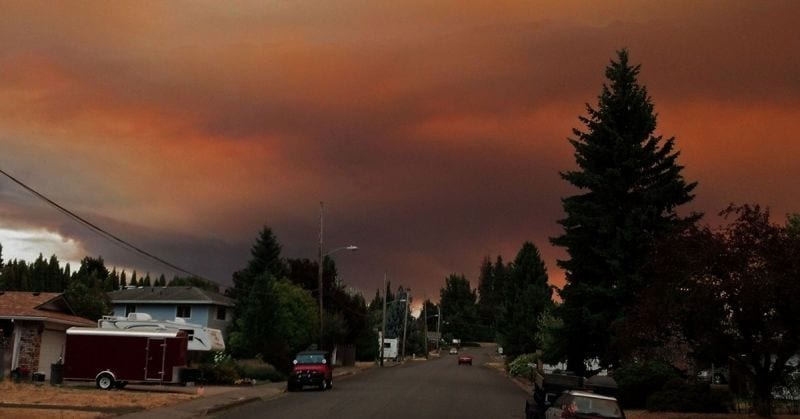
Heavy smokers: Fires in recent years have laid a blanket of toxins over Hood River, Oregon, and other communities across the Columbia River Basin. Photo by Jurgen Hess
Is Kobziar’s microbe-laden scientific breakthrough as pathogenically foreboding as it seems?
“I don’t quite see it that way,” says Kobziar. “As a fire ecologist, I think fire is natural, has always played its role, and is something that so many of our ecosystems depend on.
“I think what it does do is make us think about the importance of understanding the health repercussions and of doing whatever we can to look after each other. Especially those people on the front line—firefighters interacting with smoke, firelighters doing prescribed burns—who are already risking their lives to protect us.”





